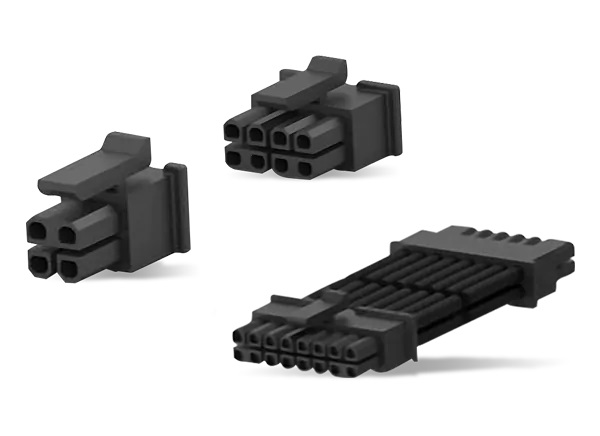Source : Mouser Electronics
Robots have been part of the manufacturing landscape for decades, but the advent of Industry 5.0 fueled by Big Data is helping retool the equation in favor of not only increased but flexible automation from robots. Sure, giant robots in cages that stamp out automobile bumpers by the minute are still needed, but so are their more flexible and smaller cousins: The collaborative robot. Collaborative robots, shortened to cobots, enjoy many advantages over their more traditional counterparts: They can be reprogrammed quickly to take on new tasks even over the course of a single day. Cobots play well with humans and work alongside them efficiently. More often than not, cobots take on tasks that are repetitive and boring, freeing up humans for more complex work. Most important, cobots are regarded as cost-effective, meaning even small- to medium-sized businesses can afford automation.
Cobots are anchoring Industry 5.0, the next Industrial Revolution. Valued at $649.1 million in 2018, the global market for cobots is forecast to grow at an astonishing 44.5 percent compounded annual growth rate until 2025. Here, we will discuss some of the components that are supporting the next generation of cobots.
The Cobot Industrial Arm
Industrial robot arms are manipulators, sort of like human arms. Instead of muscles, their mechanical joints are powered by an external power source, typically electric motors. The arm does the heavy lifting and computer software acts as the brain. Vision- and motion-detection systems help it perceive objects and act on that information.
Proximity Sensing
Since a cobot is not caged, it must meet a certain range of safety conditions. It must have proximity sensing enabled during task execution. This way, when employees come too close, it knows to enforce a safety stop. More sophisticated vision systems can also monitor the rate at which a human moves toward them so they can stop on time and resume when the human leaves. In addition to proximity sensing, it should also allow employees to override its behavior with a standard emergency stop (E-stop) button.
Force-sensing
Cobots must also know when to stop pushing or how much force to exert when performing tasks. A pick-and-place cobot that handles eggs, for example, will need to apply a different amount of force compared to one that handles metal bearings. Force-sensing is an important aspect of a mechanical arm and will need to have embedded sensors included to adjust its responses accordingly.
In manufacturing or other applications, the mechanical arm is outfitted with a range of end-of-arm tooling options from soft grippers to vacuum cups, depending on the application desired.
Cobot Components
The computer “brain” that controls the robot arm must be able to sense the current angular positions of all the joints at all times. This is a fundamental requirement for the proper functioning of control algorithms for all industrial arms, including conventional, caged robots as well as collaborative robot arms. To sense the joint positions, these robots need special-purpose sensors integrated into the joint motors. For robot manufacturers, these sensors are a critical component to source. They must work reliably throughout the working life of the robot, even when the joint becomes hot through loading on the factory floor. One of the key requirements for these sensors is the ability to fit into a very tight space. Every time the arm links are redesigned, the sensors need to be chosen to match. For designing a family of robots with a common bill of materials, it is important to have these sensors available in a range of sizes.
TE Connectivity’s Industrial Resolvers fit the bill nicely. They are analog angular position sensors for industrial servo motors. These hollow-shaft high-precision resolvers are more reliable and designed for low-space requirements, allowing customization and greater flexibility to the users.

Figure 1: TE Connectivity Industrial Resolvers offer absolute angular information throughout 360 degrees, depending on the version. (Source: Mouser Electronics)
Cobots, like all industrial robots, need power to be delivered reliably to their motors. There are many design options for connecting the control signaling, electrical power, and power electronics components. In any case, the connectors that deliver this power and signaling need to adhere to industrial standards, as well as withstand a significant amount of mechanical twisting and bending. A wire-to-board connector, which connects a wire to a printed circuit board (PCB) that enables connectivity between circuits, is a key part to select in the design. Again, a common bill of materials probably dictates a family of related connectors with multiple configurations to mix and match.
TE Connectivity’s ELCON Micro Wire-to-Board Power Solutions offer a high-current density up to 12.5A per pin (maximum) in the common industry footprint of 3mm (contact pitch). This common industry footprint provides designers and engineers with design flexibility through easy upgrades to existing designs.
 Figure 2: TE Connectivity ELCON Micro Wire-to-Board Power Solutions support 2 to 24 pin configurations and different currents with multiple combinations of different wire sizes. (Source: Mouser Electronics)
Figure 2: TE Connectivity ELCON Micro Wire-to-Board Power Solutions support 2 to 24 pin configurations and different currents with multiple combinations of different wire sizes. (Source: Mouser Electronics)
Components such as these from TE Connectivity help enterprises set up cobots to meet their specific space constraints and programming needs.
Conclusion
As automation continues to increase, cobots are expected to play a critical role in accelerating its pace. The next Industrial Revolution, Industry 5.0, is already here. Cobots can work for pick-and-place tasks in assembly lines, assembly of parts, driving screws, polishing, inspections, and other routine tasks.
The technology that drives these cobots is also becoming more sophisticated with advanced computer vision and sensing capabilities leading the way. As cobots will increasingly be called upon to do more with less, they will need components similar to the ones from TE Connectivity to build the next generation of cobots.
To learn more, visit www.mouser.com










